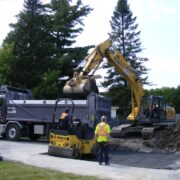Mapping technology has become an indispensable tool in the construction industry. It uses geospatial data, satellite imagery, Global Positioning System (GPS), and advanced software to represent construction sites, buildings, and infrastructure accurately. By leveraging mapping technology, construction professionals can optimize project planning, improve decision-making, and enhance overall project outcomes. Companies like magicinnovations.ae are at the forefront of developing innovative mapping solutions that drive efficiency and productivity in the construction sector.
Table of Contents
Evolution of Mapping Technology in Construction
Over the years, mapping technology has evolved significantly. In the past, construction projects relied heavily on manual surveying techniques, which were time-consuming and prone to errors. With the advent of Geographic Information Systems (GIS), GPS, and advanced software, the construction industry has witnessed a paradigm shift in how projects are planned, executed, and monitored. Today, companies like https://magicinnovations.ae/service/3d-mapping/ are at the forefront of leveraging cutting-edge mapping technology, including 3D mapping, to streamline construction processes, improve accuracy, and boost productivity.
Benefits of Mapping Technology
Improved Project Planning and Design
Mapping technology enables accurate site surveys, allowing construction professionals to gather detailed information about the terrain, existing structures, and utilities. This data can be used to create precise 3D models, aiding in better project planning, design, and optimization of resources.
Enhanced Accuracy and Precision
By utilizing mapping technology, construction teams can achieve higher accuracy and precision in various aspects of the project. From setting foundations to verifying as-built conditions, mapping technology minimizes errors and ensures the constructed elements align with the design intent.
Efficient Resource Management
Mapping technology facilitates efficient resource management by providing real-time data on material quantities, equipment locations, and workforce allocation. This enables project managers to make informed decisions, optimize resource utilization, and minimize waste.
Applications of Mapping Technology in Construction
Site Surveys and Topographic Mapping
Mapping technology enables accurate site surveys and topographic mapping, providing essential data for project planning, grading, and earthwork calculations. It allows construction teams to visualize the site conditions and make informed decisions regarding site preparation and infrastructure layout.
Building Information Modeling (BIM)
Building Information Modeling (BIM) combines mapping technology with 3D modeling to create intelligent digital representations of buildings and infrastructure. BIM facilitates collaboration among architects, engineers, and contractors, enabling them to visualize the project, identify clashes, and optimize construction sequences.
Construction Progress Monitoring
Mapping technology allows for real-time monitoring of construction progress. By comparing as-built conditions with the planned schedule, project managers can identify delays, assess productivity, and take corrective actions to meet project timelines.
Environmental Impact Assessment
Mapping technology aids in environmental impact assessment by analyzing terrain characteristics, vegetation cover, and hydrological patterns. This information allows construction teams to minimize the environmental footprint of projects, preserve ecosystems, and comply with regulatory requirements.
Future Trends in Mapping Technology
Augmented Reality (AR) and Virtual Reality (VR)
Augmented Reality (AR) and Virtual Reality (VR) technologies are expected to play a significant role in mapping technology. These immersive technologies enable construction professionals to visualize and interact with digital models in real-world environments, enhancing design visualization, training, and on-site decision-making.
Drone Mapping and Aerial Surveys
Drones equipped with mapping sensors and cameras have revolutionized data collection in construction. They can capture high-resolution aerial images, create detailed topographic maps, and perform inspections in hard-to-reach areas. Drone mapping offers improved accuracy, efficiency, and safety in construction projects.
Real-time Data Analytics and Predictive Modeling
Advancements in data analytics and predictive modeling will further enhance mapping technology in construction. Project managers can make data-driven decisions, anticipate potential issues, and optimize project outcomes by leveraging real-time data from sensors, IoT devices, and construction management systems.
Conclusion
Mapping technology has transformed the construction industry, empowering professionals with advanced tools for planning, executing, and monitoring projects. By harnessing the benefits of mapping technology, construction teams can achieve higher accuracy, efficiency, and safety levels. As technology continues to evolve, the future of mapping in construction holds even more exciting possibilities.
















Comments